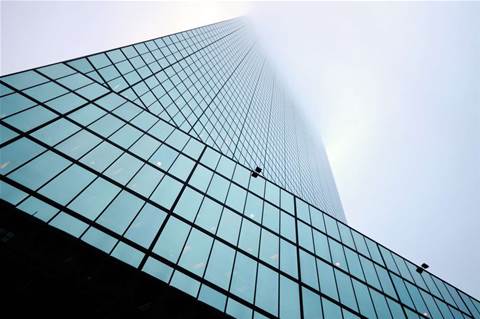Analyst firm Hydrasight claims VMware's ascendancy in the enterprise shares many characteristics of the rise of Windows - including a relatively closed management stack and an "often hefty total cost".
A note penned by Hydrasight research director Michael Warrilow urged "buyer beware" when purchasing VMware.
Warrilow said VMware's domination of virtualisation in the enterprise could allow it to exert more influence over customers' server and technology strategies.
"If you're an organisation that tends to go with [vendors in the] position of strength and leadership, you'll probably have your servers dictated by VMware, Microsoft and to a lesser extent your hardware vendor," Warrilow said.
Hydrasight said virtualisation management software was an area where VMware could exert its growing influence.
VMware have backup and high availability utilities, alongside other tools such as Appspeed, which inspects traffic flowing over a switch to pinpoint latency caused by different applications residing on virtual machines.
"We note that most of VMware's products are now management software applications aimed primarily [or] exclusively at administering a VMware-centric stack," Warrilow said.
"VMware claim they don't want to be the be-all, end-all for management like Tivoli or OpenView, but I think they would be quite happy for customers to have just VMware technology and a whole VMware-centric management stack."
VMware's local managing director Paul Harapin refuted the claims, saying the firm's platform was "one of the most open on the market" and that upfront cost was "frankly irrelevant compared to the benefits" of server virtualisation.
Harapin said customers had a choice of "over 30" operating systems and "thousands" of pieces of hardware, and that the company's VMSS file system had been accepted as an open standard, highlighting VMware's ‘openness'.
Warrilow suggested that companies looking to avoid vendor lock-in through the management layer could evaluate "heterogeneous" alternatives.
These included Veeam, eG Innovations, EMC Ionix (Smarts) and Tripwire, although BMC, HP (through its Opsware acquisition) and vKernel could also be considered.
Warrilow also sought to dispel the "erroneous perception that virtualisation technology is now either ‘free' or ‘commodity'".
He said the price of VMware management utilities ranged from US$2750 ($3364) up to US$6000 and beyond per hypervisor instance.
Maintenance fees could be another 20 percent on top, he said.
"VMware's dominance is in large part due to its perceived commodity status yet the total cost of ownership remains hidden or incorrectly assumed to be low," Warrilow said.
"VMware is a bit of a darling and in some respects can do no wrong. They're certainly having wild success but people have to be aware that if they think virtualisation is free, they're in for a shock."
Harapin believed the source of the "free" perception was Microsoft with its Hyper-V product.
"In this world, nothing is free," he said.
"When you look at the total cost of ownership [of VMware] there's absolutely nothing in the industry and nothing I've seen in my 20 years [in IT] that provided the financial, operational or environmental benefits that VMware does," Harapin said.
"The upfront cost of the software is quite frankly irrelevant compared to the business benefits."








_(11).jpg&h=142&w=230&c=1&s=1)



.jpg&w=100&c=1&s=0)
_(8).jpg&w=100&c=1&s=0)








.jpg&q=95&h=298&w=480&c=1&s=1)


